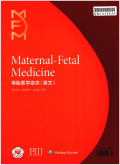- 钛学术文献服务平台 \
- 学术期刊 \
- 医药卫生期刊 \
- 妇产科学与儿科学期刊 \
- 母胎医学杂志(英文)期刊 \
Short Term Prediction of Preeclampsia
Short Term Prediction of Preeclampsia
基本信息来源于合作网站,原文需代理用户跳转至来源网站获取
摘要:
Preeclampsia (PE), a multisystem disorder in pregnancy, is a main cause of perinatal mortality and is associated with long-term maternal complications. For a long time, PE was defined as the new onset hypertension and proteinuria after 20 weeks’ gestation. It had been shown that this "gold standard definition" is not able to provide a sufficient prediction of PE-related fetal and/or maternal complications. In 2018 the International Society for the Study of Hypertension in Pregnancy recommended a broader definition of the disease. The new definition of the International Society for the Study of Hypertension in Pregnancy ruled out proteinuria as mandatory for the diagnosis of PE. This new definition increases the number of patients diagnosed as preeclamptic by nearly 21%, which is not accompanied by an increased severity of maternal outcomes. Including angiogenic biomarkers, however, has been shown to increase detection of adverse outcomes.The pathophysiology of PE is complex and not yet completely explained. Advances in prediction and diagnosis have been achieved by discovery and clinical evaluation of biomarkers, especially of placental origin. A broad spectrum of biomarkers has been tested, a few of them have been introduced into the clinical practice as of today. Especially angiogenic biomarkers that are rooted in the pathophysiology of PE have been demonstrated to be important in the prediction and diagnosis of adverse outcomes. At a cut-off value of the soluble fms-like tyrosine kinase-1 (sFlt-1)/placental growth factor (PlGF)-ratio of 85, early-onset PE <34
+0 weeks of gestation can accurately be diagnosed with a sensitivity of 89% and a specificity of 97%. The Prediction of short-term outcome in pregnant women with suspected preeclampsia (PROGNOSIS) study has shown that the high negative predictive value (99.3%) of the sFlt-1/PlGF-ratio below 38 in patients with suspected PE rules out the onset of the disease within one week. PROGNOSIS Asia, evaluating the sFlt-1/PlGF-ratio cut-off of 38 in an Asian population, confirmed the excellent accuracy in prediction.
Recently, the angiogenic biomarkers have been integrated in multi-marker prediction models. Digital approaches, integrating algorithm-based decision support tools paired with home monitoring devices may be the next step in enhancing predictive accuracy and thus bear the potential to reduce maternal and/or fetal morbidity and mortality and save costs for the payer in parallel. The objective of this review is to provide an overview of current methods for predicting and diagnosing PE.

推荐文章
吸附式热泵领域利用F-Term检索的浅析
F-Term
吸附式热泵
快速检索
检索效率
热泵领域利用F-Term的快速检索策略
F-Term
热泵
快速检索
分类系统
拟南芥根的辐射形态相关基因SHORT-ROOT研究进展
辐射形态
SHORT-ROOT
信号网络
转录因子
基于Term-Query-URL异构信息网络的查询推荐
信息检索
查询推荐
点击日志
重启动随机游走
内容分析
关键词云
关键词热度
相关文献总数
(/次)
(/年)
文献信息
| 篇名 | Short Term Prediction of Preeclampsia | ||
| 来源期刊 | 母胎医学杂志(英文) | 学科 | |
| 关键词 | Biomarkers Prediction Preeclampsia sFlt-1/PlGF Test performance | ||
| 年,卷(期) | 2021,(2) | 所属期刊栏目 | Review |
| 研究方向 | 页码范围 | 107-115 | |
| 页数 | 9页 | 分类号 | |
| 字数 | 语种 | 中文 | |
| DOI | 10.1097/FM9.0000000000000097 | ||
五维指标
引文网络
引文网络
二级参考文献 (0)
共引文献 (0)
参考文献 (0)
节点文献
引证文献 (0)
同被引文献 (0)
二级引证文献 (0)
2021(0)
- 参考文献(0)
- 二级参考文献(0)
- 引证文献(0)
- 二级引证文献(0)
研究主题发展历程
节点文献
Biomarkers
Prediction
Preeclampsia
sFlt-1/PlGF
Test performance
研究起点
研究来源
研究分支
研究去脉
引文网络交叉学科
相关学者/机构
期刊影响力
母胎医学杂志(英文)
主办单位:
中华医学会
出版周期:
季刊
ISSN:
2096-6954
CN:
10-1632/R
开本:
16开
出版地:
北京西城区东河沿街69号303室
邮发代号:
创刊时间:
2019
语种:
chi
出版文献量(篇)
122
总下载数(次)
0
总被引数(次)
2
期刊文献
相关文献
推荐文献

 免费查重
免费查重










